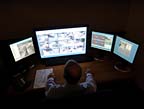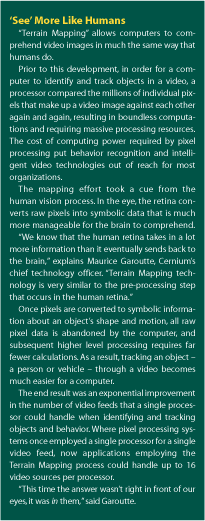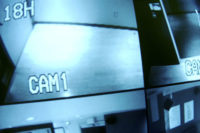
The Johns Hopkins University’s Homewood campus is a picturesque slice of academia that, like many colleges and universities, is located in the center of a bustling, urban environment. On a sizeable geographic footprint in Baltimore sits the university’s historic and ultramodern academic buildings, residence halls, athletic facilities, quadrangles, laboratories and libraries – enough to awe even the most jaded undergraduate student.
As pleasing to the eye as the campus setting may be, however, the wide dispersal of buildings – including some interwoven with surrounding neighborhoods and public streets – can also create a complicated security profile. Fortunately, the university’s security consultant, iXP Corp. of Lawrenceville, N.J., has had experience with academic settings, including Ivy League institutions Harvard University and the University of Pennsylvania. Together with the university’s security team, the company evaluated the campus’ overall public safety and command and control programs in 2005.
“As part of a proactive public safety command and control program, we designed an intelligent security video solution to monitor and analyze high-traffic areas of the campus,” said Lawrence D. Consalvos, senior vice president for iXP. “This strategy, coupled with traditional public safety radio and telephone communications, improves the response times of campus police officers.”

The strategy
The company looked to behavior recognition software as a way to ensure that all of the university’s security video was monitored and analyzed 24 hours a day, seven days a week, 365 days a year. After evaluating a number of behavior recognition software solutions, they selected St. Louis-based Cernium’s Perceptrak system as the best fit for Johns Hopkins.Like the consulting company, Cernium was quite familiar with the requirements of a campus setting. One of the earliest adopters of the Perceptrak behavior recognition technologies was Wayne State University in Detroit. Today, Boeing, the world’s largest aerospace company, and cultural centers like George Washington’s Mount Vernon Estate also use the company’s intelligent video products. The company has more than 50 installations of intelligent video systems at airports throughout North America and has supplied systems to hospitals, parking facilities and several Federal agencies.
“Cernium’s Perceptrak system is a unique solution within the intelligent video and behavior recognition market. Functionally Perceptrak’s performance exceeded our expectations, and the processing efficiencies created by Cernium’s patented technology placed the system within financial reach,” said Consalvos.

Alert on out of ordinary
The system analyzes images from video surveillance feeds, and alerts security personnel to behaviors that are suspicious or out of the ordinary. As many as 16 distinct behaviors are recognized by the system, including a fallen person, lingering individuals or vehicles, erratic movement, abandoned objects, and unauthorized personnel or vehicles in restricted areas. The system was designed to eliminate the fatigue-based errors that can arise from personnel monitoring dozens of video inputs at sprawling facilities.The two companies worked to develop the customized specifications for the university. The initial enterprise system consisted of 17 SVP4 four-camera remote video processors and three SVP8 eight-camera remote video processors, which could handle up to 92 cameras, a system server and a console station.
At the university’s monitoring center, an operator station was installed to manage four screens receiving images from dozens of cameras located throughout the campus. Monitors were put in to show live video feeds, as well as past and present images isolated by the system as potentially suspicious and requiring closer observation.
Once the installation was complete, Cernium and iXP optimized the system to meet the university’s specific security requirements. To conserve processing power, for example, the system could be tuned to only monitor for certain behaviors within the security requirements of the surveillance area.
“For instance, if a camera is monitoring a stairwell, the system does not run the algorithms that monitor for vehicular behaviors, which greatly reduces processing time,” explained Chuck Foster, Cernium’s technical relationship manager.
“We can also finely tune time-sensitive alert settings. The system doesn’t send alerts about a pair of converging people or a gathering crowd observed on campus at the height of the school day. But if the system observed the same behaviors on the same thoroughfare at a normally desolate 3:00 a.m., it would trigger an alert for security personnel to observe the activity more closely or take action.”

The results
Since its installation, security officials at Johns Hopkins have described the smart security video system as a force multiplier, allowing the university’s security department to cover more ground than it could with foot patrols alone.“It’s as if we had more people on the street,” said university spokesman Dennis O’Shea.
The system also took the burden of constantly monitoring dozens of video feeds off the shoulders of individual operators.

“But if you give human operators a powerful tool like behavior recognition software that automates monitoring and presents prioritized alerts, you can increase the effectiveness of the human operator and create a system that is more preventive than reactive.”
The system was installed weeks before the start of the summer break, and is receiving its first full-semester test this fall. Using the system, the university has been able to monitor and intervene in situations before they could become dangerous.

